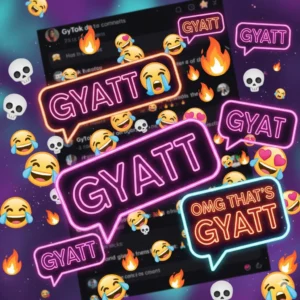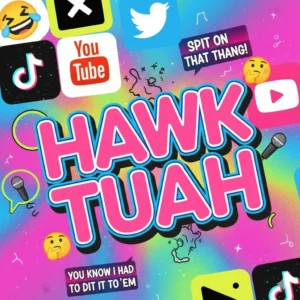Spanish is one of the most widely spoken languages in the world, with over 500 million native speakers across more than 20 countries. Yet, while formal Spanish is taught in classrooms and textbooks, what truly brings the language alive is slang—those colorful, informal expressions that locals use daily.
Slang (known as jerga in Spanish) is more than casual vocabulary. It reflects culture, history, humor, and regional identity. What someone says on the streets of Madrid might sound entirely different from what you’d hear in Mexico City, Buenos Aires, or Bogotá. Understanding slang not only helps you sound natural but also deepens your connection to Spanish-speaking communities.
In this 2025 guide, you’ll discover:
- The most important Spanish slang words today.
- Their meanings and definitions.
- How they are used in texting, conversations, and different tones.
- The cultural context behind them.
- Polite, casual, and professional alternatives so you can adapt depending on the situation.
This isn’t just another list of words. It’s a deep dive into the living language of Spanish, updated with the most relevant and widely used expressions of 2025.
Why Slang Matters in 2025
Language evolves faster than ever, thanks to social media, global migration, and pop culture. In 2025, Spanish slang continues to be shaped by:
- TikTok & Instagram trends: New phrases spread across borders in days.
- Reggaeton & Latin trap music: Lyrics often introduce slang that becomes mainstream.
- Cross-cultural exchange: English slang mixes with Spanish, especially in the U.S. and Latin America.
- Generational shifts: Younger speakers innovate, while older speakers preserve traditional slang.
Mastering slang is no longer optional—it’s essential if you want to keep up with real-world Spanish.
10 Essential Spanish Slang Words in 2025
Below are 10 of the most impactful slang words and expressions used across the Spanish-speaking world today. For each, you’ll find:
- Definition
- Context and tone (casual, polite, professional)
- Example sentences
- Nuances across regions
1. Qué fresa
Meaning: Used in Mexico to describe someone who is preppy, posh, or overly refined.
- Casual tone: Playful jab among friends.
- Polite tone: “Él es muy formal” (He’s very proper).
- Professional tone: “Tiene un estilo refinado” (He has a refined style).
Example:
- Casual: “No quiero ir a ese lugar, está demasiado fresa.”
- Neutral: “Ella tiene gustos sofisticados.”
Nuance: Originally Mexican, but now known across Latin America through TV shows and memes.
2. Guay
Meaning: Cool, awesome, or nice (mainly Spain).
- Casual: “¡Qué guay tu coche nuevo!”
- Polite: “Tu propuesta me parece muy interesante.”
- Professional: “Es una idea excelente.”
Nuance: In Spain, it’s universal, but in Latin America, people may prefer chévere or bacán.
3. Chévere
Meaning: Cool, nice, awesome (widely used in Venezuela, Colombia, Peru).
- Casual: “Esa fiesta estuvo chévere.”
- Polite: “Tu plan suena muy bien.”
- Professional: “La presentación fue destacable.”
Nuance: A warm, upbeat word that conveys friendliness.
4. No manches / No mames
Meaning: Expression of disbelief or surprise (Mexico).
- Casual: “¡No manches! ¿Ganaste la lotería?”
- Polite alternative: “¿En serio?”
- Professional: “¿De verdad es así?”
Nuance: No mames is stronger and can be vulgar; no manches is softer and widely accepted.
5. Tío / Tía
Meaning: Literally “uncle/aunt,” but in Spain it means “dude” or “guy.”
- Casual: “Ese tío es muy gracioso.”
- Polite: “Ese hombre es muy simpático.”
- Professional: “El señor tiene un buen sentido del humor.”
Nuance: Common among young Spaniards, but not used this way in Latin America.
6. La neta
Meaning: The truth, the real deal (Mexico).
- Casual: “La neta, no quiero salir hoy.”
- Polite: “Sinceramente, prefiero no ir.”
- Professional: “Para ser honesto, no es viable.”
Nuance: Deeply Mexican, conveys sincerity and honesty.
7. Güey / Wey
Meaning: Dude, buddy, or even idiot depending on tone (Mexico).
- Casual: “Oye güey, ¿vamos al cine?”
- Polite: “Amigo, ¿quieres acompañarme?”
- Professional: Avoided; use “compañero” or “colega.”
Nuance: So common in Mexico that it’s almost filler word.
8. Bacán
Meaning: Cool, great (Chile, Peru, Colombia).
- Casual: “Esa canción está bacán.”
- Polite: “La música suena muy bien.”
- Professional: “El proyecto fue muy exitoso.”
Nuance: Similar to chévere but region-specific.
9. Currar
Meaning: To work (Spain).
- Casual: “Hoy tengo que currar hasta tarde.”
- Polite: “Hoy trabajaré hasta tarde.”
- Professional: “Tengo una jornada extendida.”
Nuance: Informal, used mostly in Spain.
10. Vale
Meaning: Okay, alright (Spain).
- Casual: “Nos vemos mañana, vale.”
- Polite: “De acuerdo, hasta mañana.”
- Professional: “Confirmado para mañana.”
Nuance: A classic Spanish word that has become global through media.
How to Choose the Right Slang Expression
Choosing slang depends on:
- Audience: Close friends vs colleagues.
- Tone: Playful vs respectful.
- Region: A word common in Spain may confuse someone in Mexico.
- Medium: Texting allows more informal slang than workplace emails.
Think of slang as layers of expression: casual with friends, neutral with acquaintances, polished in professional contexts.
Slang in Texting (2025 Trends)
Just like English has “LOL” or “BRB,” Spanish texting slang evolves constantly. In 2025, the most common include:
- q = que (that/what)
- xfa = porfa (please)
- tqm = te quiero mucho (I love you a lot)
- bn = bien (good)
- toy = estoy (I am)
Example: “q haces? toy bn, tqm” = “What are you doing? I’m fine, love you.”
Polite, Casual, and Professional Alternatives
Let’s revisit slang through tone. Here are examples of alternatives:
- Qué fresa → Formal: “Es elegante.”
- Guay → Formal: “Excelente.”
- Chévere → Formal: “Muy positivo.”
- No manches → Formal: “¡Qué sorpresa!”
- Tío → Formal: “Señor / señorita.”
- La neta → Formal: “La verdad.”
- Güey → Formal: “Colega.”
- Bacán → Formal: “Destacado.”
- Currar → Formal: “Trabajar.”
- Vale → Formal: “De acuerdo.”
By switching between these levels, you adapt your Spanish to any social or professional setting.
Conclusion
Spanish slang is more than vocabulary—it’s the heartbeat of everyday conversation. Whether you’re joking with friends, texting your crush, or presenting to colleagues, knowing slang and its alternatives helps you navigate tone, culture, and connection.
In 2025, slang continues to evolve rapidly, shaped by music, memes, and digital culture. Staying updated ensures you don’t just speak Spanish—you live it.










